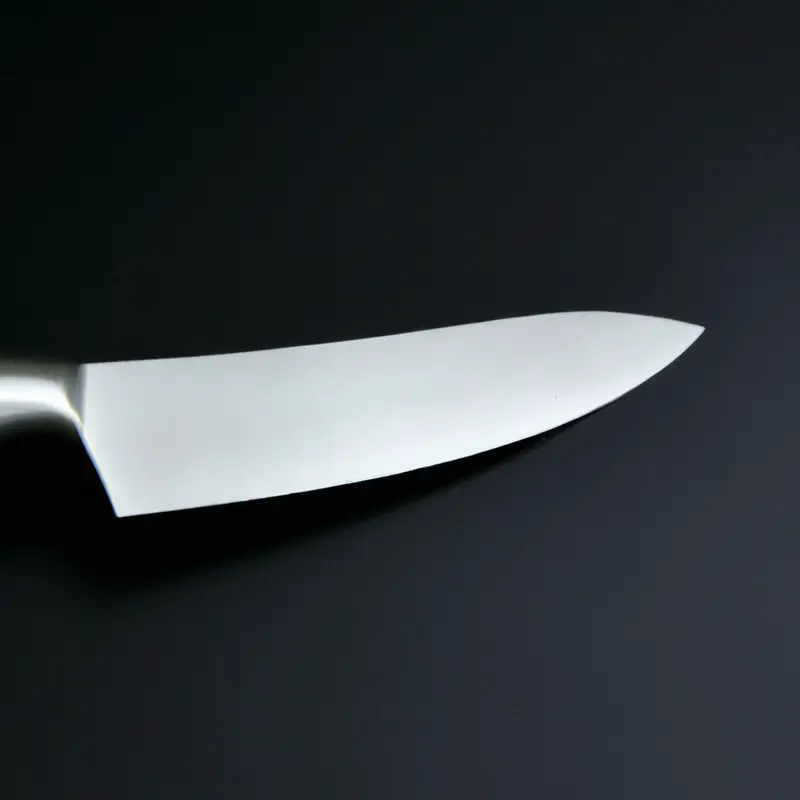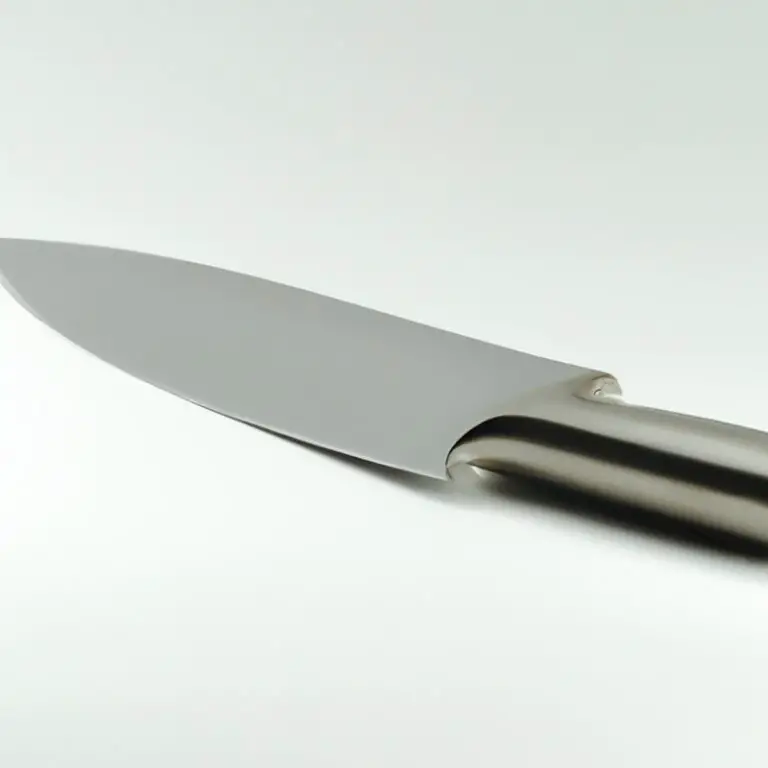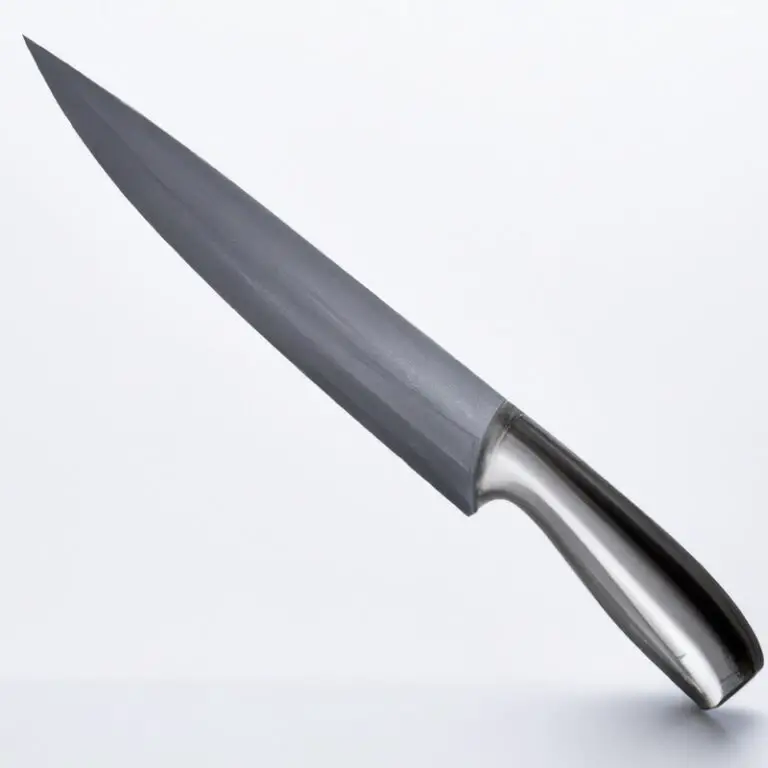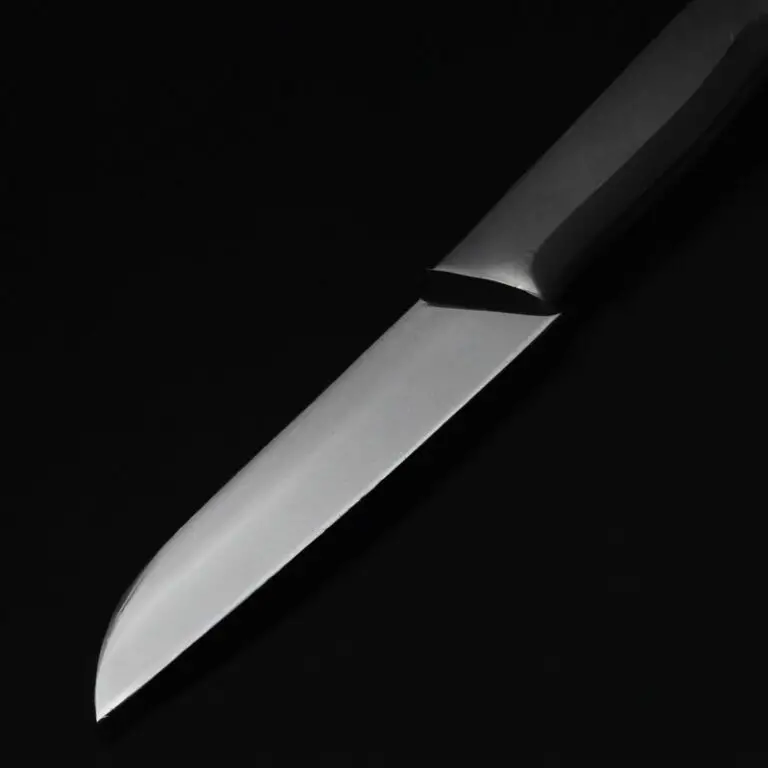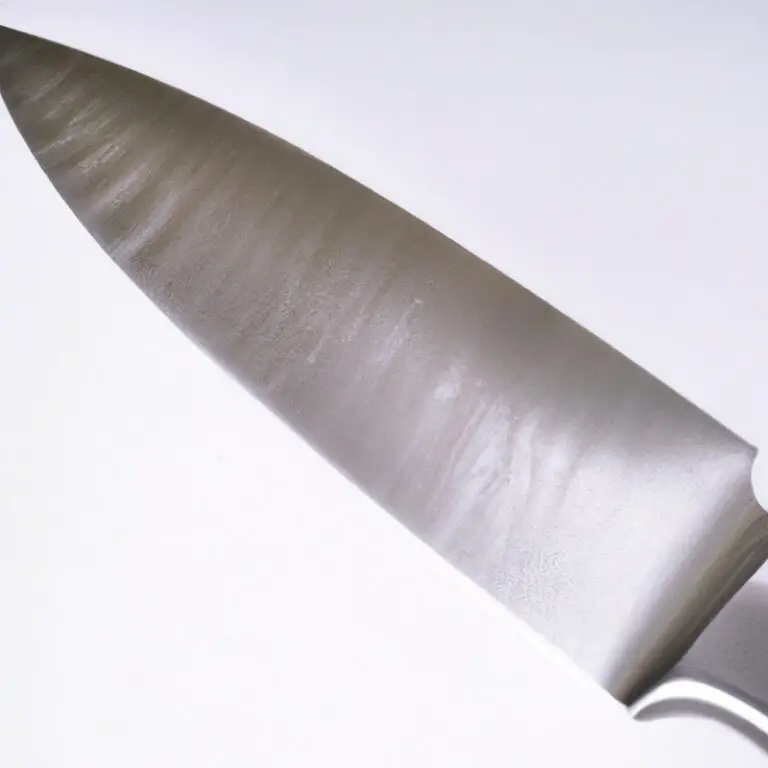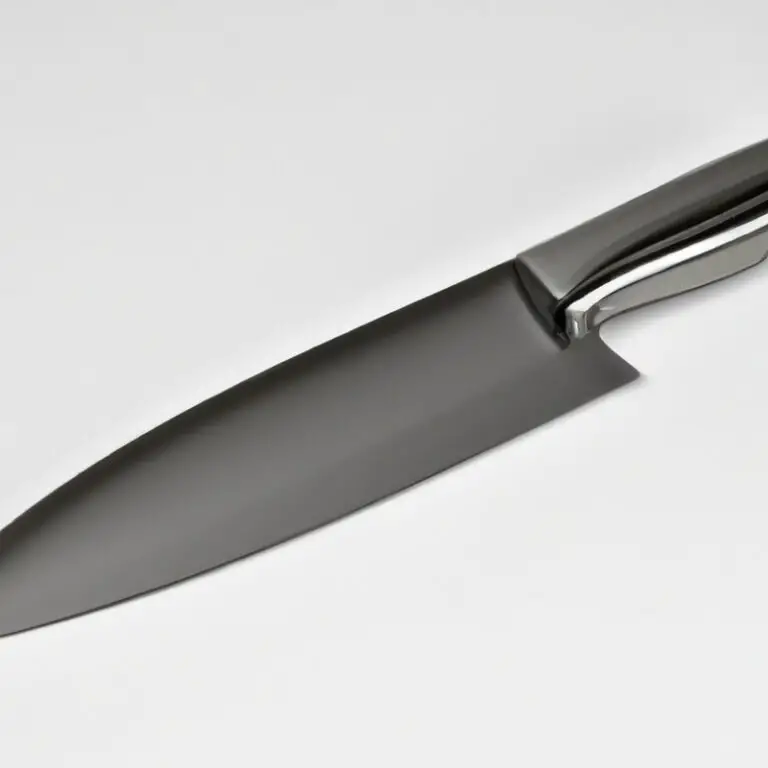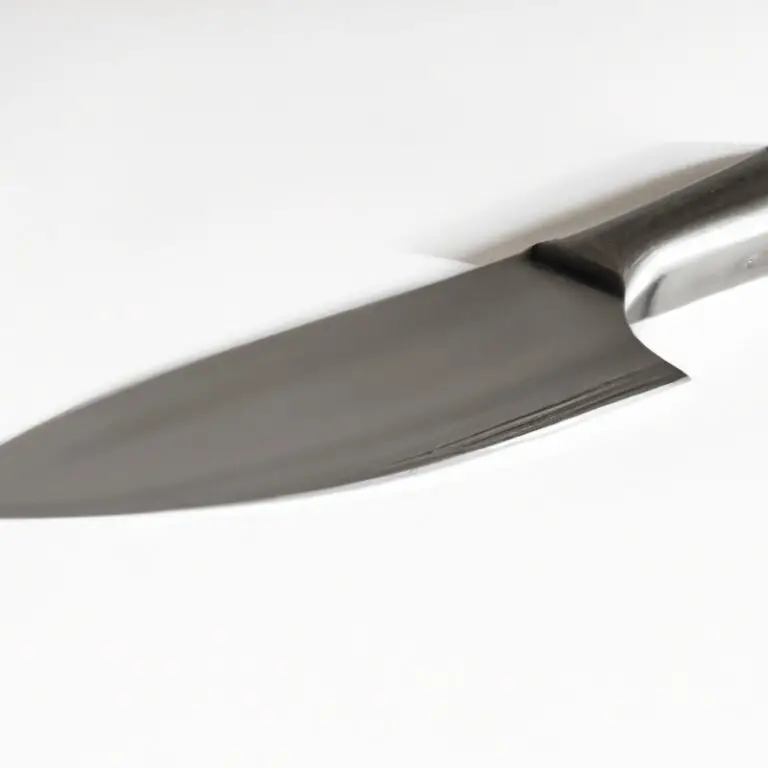How To Julienne Carrots With a Santoku Knife? Easy!
Key Takeaways:
- Julienne carrots with a Santoku knife by first cutting the carrot into uniform slices, stacking them, and cutting them into thin strips.
- Use a sharp and sturdy Santoku knife for precision and control when julienning carrots.
- Safety is key when using a sharp knife, so be sure to keep your fingers away from the blade and use a cutting board to prevent injuries.
- Practice makes perfect, so keep practicing your julienne technique until you achieve the desired results.
Have you ever struggled to julienne carrots with a regular kitchen knife? Fret not, because a Santoku knife is the solution you’ve been looking for.
This versatile and agile knife from Japan is perfect for julienning carrots, and in this article, I’ll show you how to use it effectively.
From choosing the right carrots to maintaining the sharpness of the Santoku knife, I’ll cover all the tips and tricks you need to create even and consistent julienne cuts. Plus, I’ll share some delectable recipes that make the most of julienne carrots.
Let’s get started!
| Step | Description |
|---|---|
| 1 | Fresh carrots are best. Peel and cut off the ends of the carrot. |
| 2 | Cut the carrot in half crosswise. |
| 3 | Place the flat end of the carrot on the cutting board. Cut the carrot lengthwise into thin slices using a Santoku knife with a back-and-forth sawing motion. Aim for slices that are around 1/8 inch thick. |
| 4 | Stack a few slices together and cut them into thin matchsticks. Aim for pieces that are around 1/8 inch thick and 2-3 inches long. |
| 5 | Repeat the process with the remaining carrot halves. |
What is a Santoku knife and why is it ideal for julienning carrots?
A Santoku knife is a Japanese-style knife that is commonly used for chopping, slicing, and dicing vegetables, meat, and fish. It has a shorter, wider blade compared to a regular chef’s knife, with a straighter edge that is ideal for precise cuts.
The Santoku knife’s unique design and shape make it an excellent choice for julienning carrots.
Its wide blade allows for better control, making it easier to slice through the dense root vegetable. The straight edge also allows for a clean, even cut, ensuring consistent thickness in each julienne.
Additionally, the Santoku knife’s sharpness and comfortable grip make it easier to slice through the crunchy texture of carrots, minimizing the risk of slipping and injuring yourself while preparing the vegetable.
Its versatile design also makes it a great option for other kitchen tasks, making it a valuable addition to any kitchen.
Choosing the right carrots for julienning with a Santoku knife
When it comes to choosing the right carrots for julienning with a Santoku knife, ensure that they are straight, firm, and fresh. Avoid carrots with cracks, splits or bruises.
The ideal size of the carrot should be around 7 inches long and 1 inch in diameter to ensure even cuts.
Carrots that are too thin may result in thin, uneven julienne cuts, while those that are too thick can be difficult to cut. Additionally, choose carrots that are evenly shaped and have a uniform thickness for consistent julienne cuts.
By selecting the appropriate carrots, you can ensure that your julienne cuts are perfect every time.
Preparing the carrots for julienning with a Santoku knife
Before you start julienning carrots with a Santoku knife, it’s essential to prepare the carrots properly. Begin by washing and peeling the carrots to remove dirt and any pesticides.
Next, trim off the ends and cut the carrot lengthwise in half.
To make julienne cuts, cut each half of the carrot into thin, even pieces using your Santoku knife. The ideal size of the julienne cut varies depending on the recipe you are using, but a typical size is about 1/8 inch wide by 1/8 inch high.
When preparing the carrots for julienning, make sure to maintain a steady grip on the carrot with your non-dominant hand to keep it stable while cutting.
Use the tip of your Santoku knife to make precise cuts, and avoid forcing the knife through the carrot to prevent the julienne pieces from being uneven. Overall, precise preparation of the carrots is essential for creating even and consistent julienne cuts.
By taking the time to prepare the carrots correctly, you’ll ensure that your finished dish has a professional-looking presentation and uniform texture.
Proper grip and handling of the Santoku knife for efficient julienning
To ensure efficient julienning, it’s crucial to have a proper grip and handling of the Santoku knife. Hold the knife with your dominant hand and place your index finger and thumb on the blade’s spine, while wrapping your remaining fingers around the handle.
This grip provides stability and control for even cuts.
Apply slight pressure while slicing the carrot into thin and consistent strips. Additionally, it’s essential to maintain a comfortable and relaxed grip to avoid hand fatigue and injury.
Creating even and consistent julienne cuts with a Santoku knife
Creating even and consistent julienne cuts with a Santoku knife requires proper technique and practice. Start by cutting off the top and bottom ends of the carrot.
Then, slice the carrot in half lengthwise to create a flat surface.
Place the carrot half flat-side down on the cutting board and make thin slices lengthwise. Next, stack the slices and cut them into thin matchsticks by holding your fingers against the stack and slicing downwards.
To achieve even and consistent cuts, it is important to maintain a consistent speed and angle throughout the process.
Keep the tip of the Santoku knife in contact with the cutting board and use a rocking motion to slice through the carrots smoothly. It is also essential to have a sharp Santoku knife to ensure clean cuts and avoid crushing or tearing the carrots.
Remember to always use a proper grip and handle the knife with care to prevent injuries.
With practice and patience, you can master the art of julienning carrots with a Santoku knife, adding texture and flavor to your recipes.
Tips for maintaining sharpness of the Santoku knife during julienning
To maintain the sharpness of your Santoku knife during julienning, follow these tips:
- Use a Cutting Board: Avoid cutting on hard surfaces like countertops or plates, which can dull the blade. Use a cutting board instead.
- Sharpen Regularly: Sharpen the Santoku knife regularly using a sharpening stone or honing rod to ensure it remains sharp.
- Proper Storage: Store the knife in a sheath or a knife block to protect the blade and prevent it from getting dull.
- Avoid Bones and Hard Foods: Do not use the Santoku knife to cut bones, pits, or other hard foods, as it can chip the blade and make it dull.
- Clean and Dry After Use: After use, clean the knife with warm water and mild soap. Dry it thoroughly before storing. Never put the knife in the dishwasher, as it can damage the blade.
By following these tips, you can maintain the sharpness of your Santoku knife during julienning and ensure that it lasts for a long time.
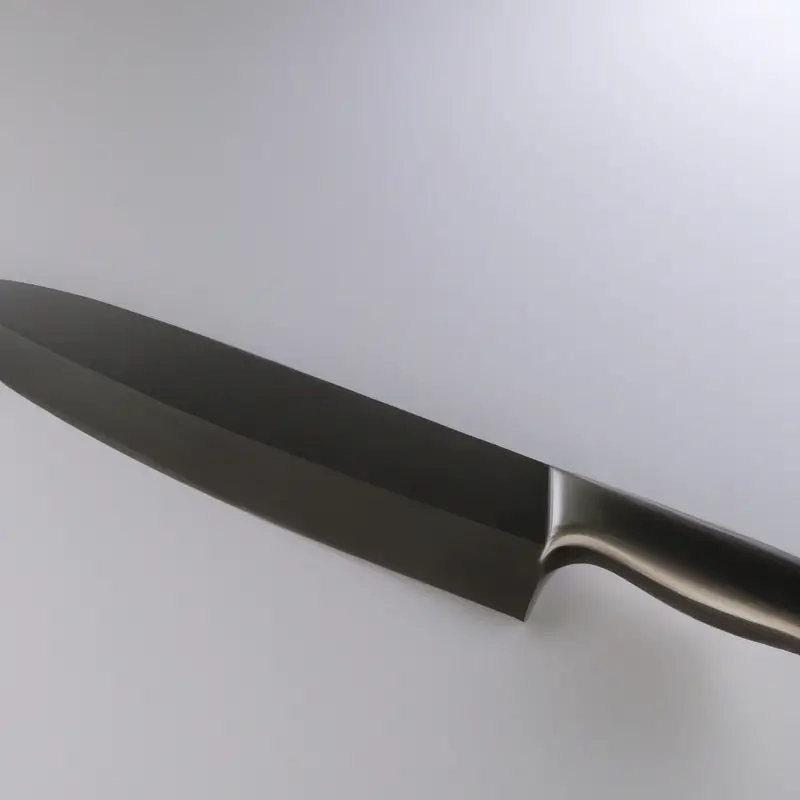
Using the julienne carrots in recipes for added texture and flavor
Using julienne carrots in recipes adds both texture and flavor to dishes. These thin strips of carrots not only make a dish visually appealing but also offer a satisfying crunch.
They are versatile and can be used in salads, stir-fries, soups, and sandwiches.
Some popular recipes that use julienne carrots include coleslaw, spring rolls, and carrot cake. Incorporating julienne carrots in recipes is an excellent way to boost the nutritional value of your meals.
Carrots are a great source of vitamins A and C, dietary fiber, and antioxidants.
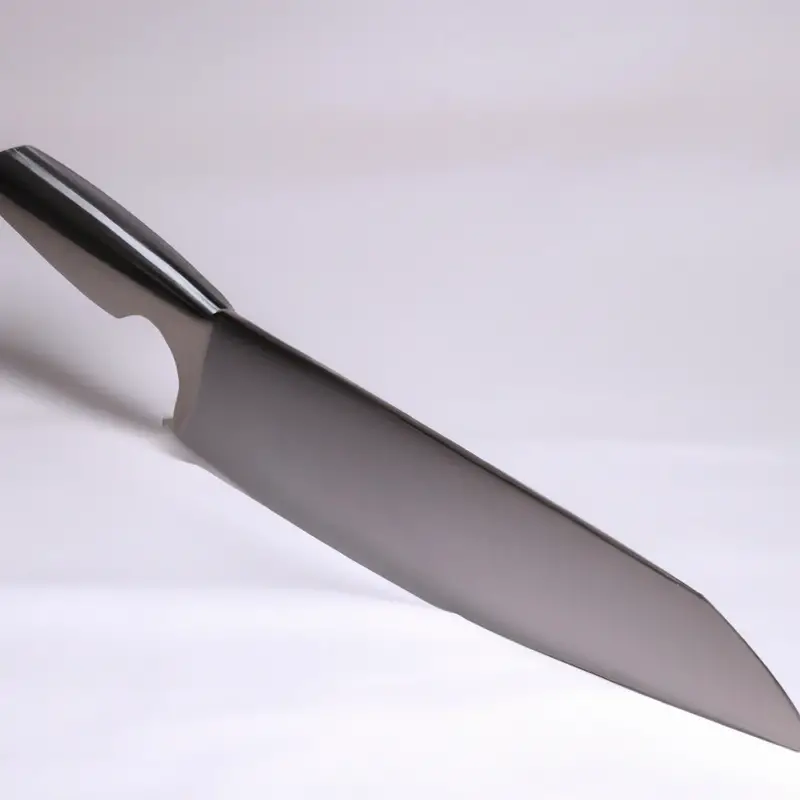
Alternatives to the Santoku knife for julienning carrots
While the Santoku knife is a great option for julienning carrots, there are other knives that can also get the job done. Some alternatives to the Santoku knife for julienning carrots include:
- Chef’s knife: The chef’s knife is a versatile option that can be used for various cutting techniques, including julienning carrots. Its longer blade can help make longer cuts with fewer strokes.
- Paring knife: The small and maneuverable paring knife can be a good option for julienning smaller carrots or when working with intricate cuts.
- Mandoline: A mandoline is a kitchen tool that can help create uniform slices and julienne cuts of carrots quickly and efficiently. It requires a bit of practice to use and can be dangerous if not handled properly.
When choosing an alternative knife for julienning carrots, it’s important to consider the size and shape of the carrots, your comfort level with the knife, and the type of cuts you need to make. Always be sure to use a sharp knife and take proper safety precautions to prevent injuries.
Safety precautions to take when handling a sharp Santoku knife
Safety precautions are paramount when handling a Santoku knife, as it is an extremely sharp tool that requires careful handling to avoid accidents. It is recommended to use a cutting board while using a sharp knife, as this will prevent the knife from slipping, reducing the risk of injury.
Another important tip is to use a proper grip when holding the knife.
The handle should be firmly gripped, ensuring that the thumb and forefinger hold the blade’s base. It is also recommended to keep the fingers curled under and out of the way to prevent them from being sliced accidentally.
When cutting, it is vital to use a slow and controlled motion without applying too much pressure.
Trying to cut too quickly or forcefully can lead to the knife slipping, potentially causing harm to the user. After use, it is essential to clean and dry the knife and store it in a secure and safe location, where it cannot cause harm to anyone.
By following these safety tips, the risk of accidents when slicing and dicing will be reduced, allowing for more efficient and safe use of the Santoku knife.
Final Verdict
Mastering the art of julienning carrots with a Santoku knife is a skill worth learning for any aspiring home cook or professional chef. With the right carrots, proper preparation, and a steady grip, creating even and consistent julienne cuts is achievable.
Keep in mind the maintenance of the Santoku knife’s sharpness and safety precautions during handling.
Using julienne carrots in your recipes will add texture and flavor to your dishes. While other knives can also be used for julienning, the Santoku knife’s multipurpose design makes it an ideal choice.
By implementing these tips, you can rely on your Santoku knife to create beautiful julienne cuts every time, while also building your culinary expertise and impressing your diners.

